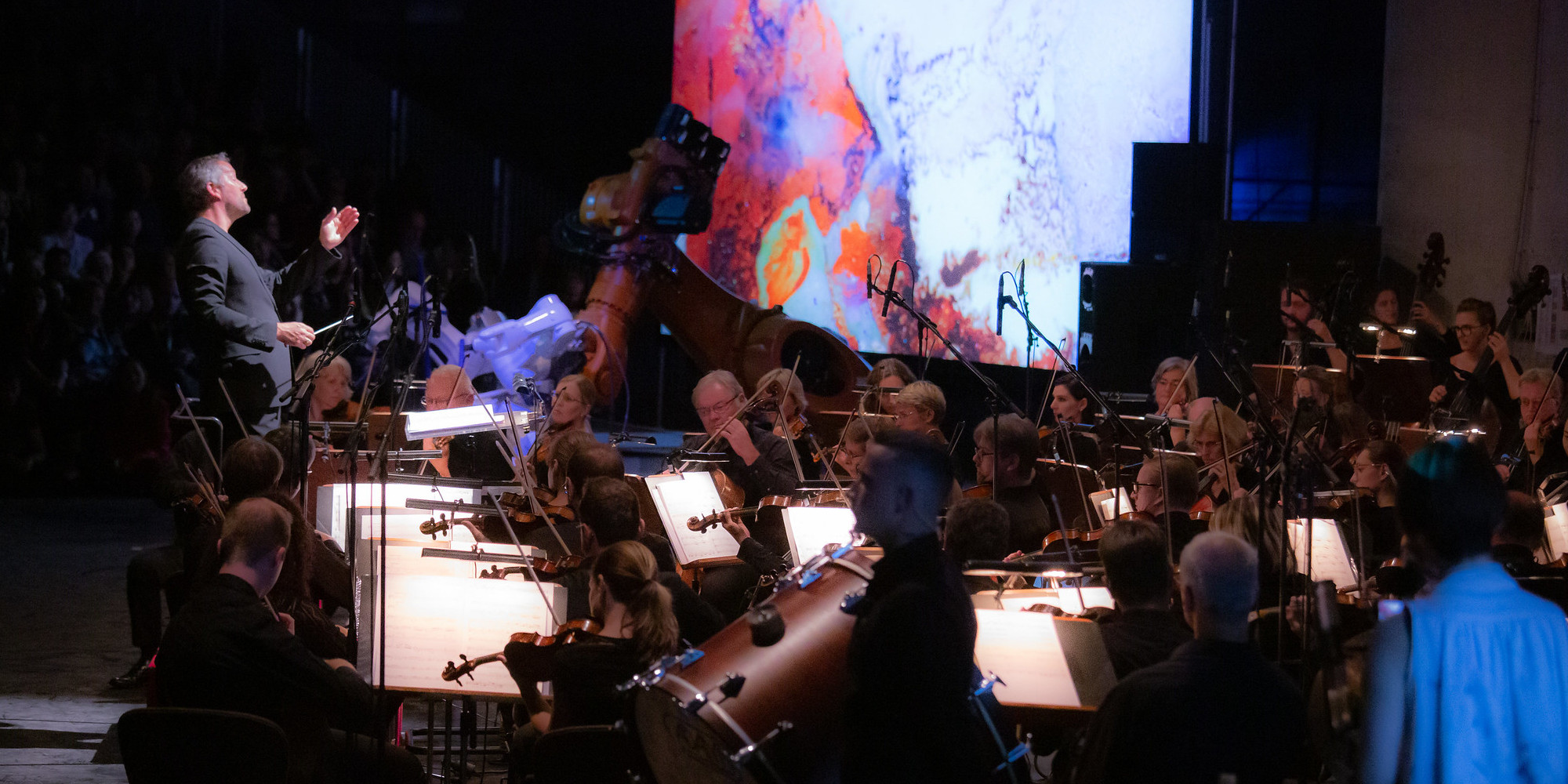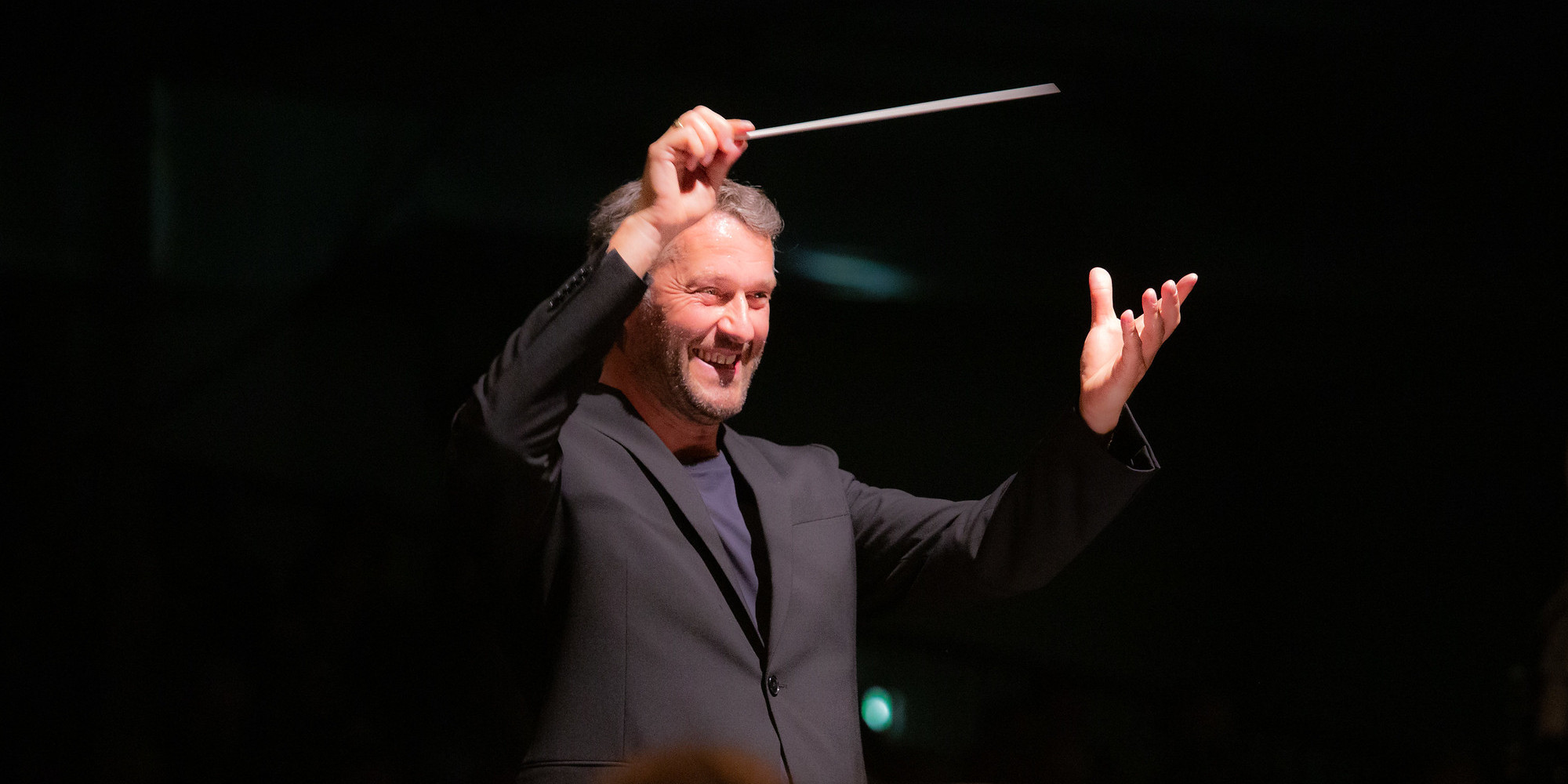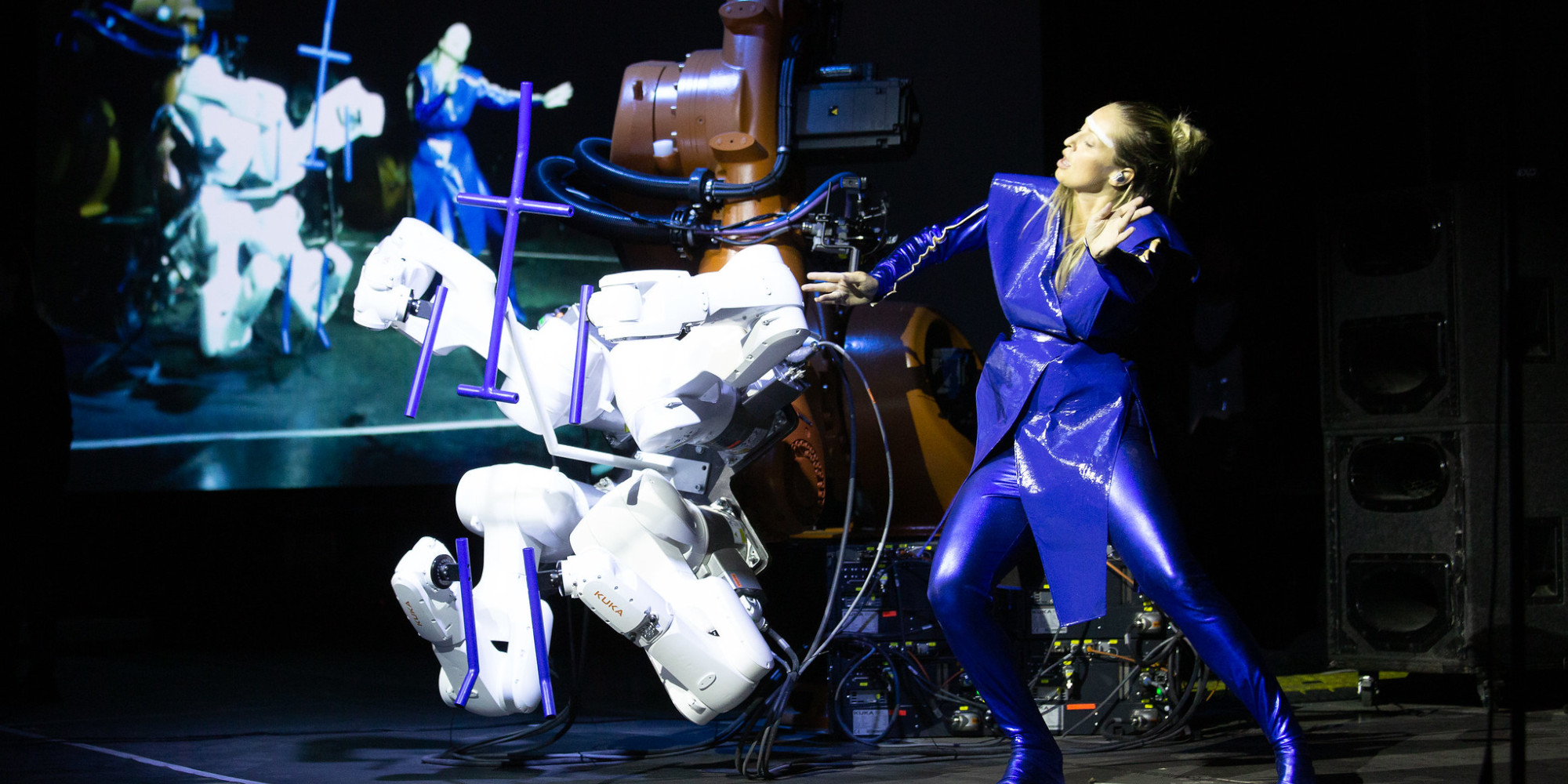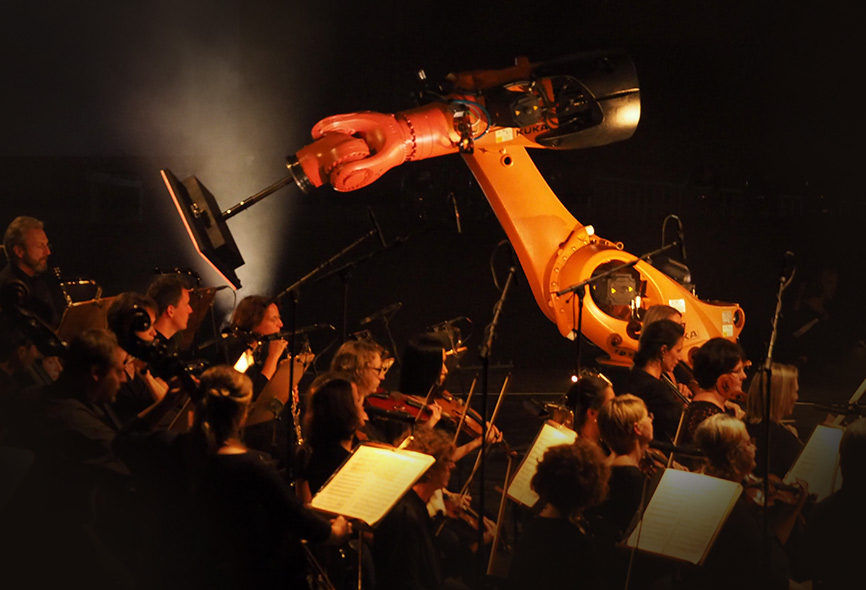The “Mahler-Unfinished” Project
In cooperation with the Bruckner Orchestra Linz
Since 2003, the collaboration with the Bruckner Orchestra has been an integral and unique part of the Ars Electronica Festival. It is a collaboration that makes it possible not only to perform interesting works each year, but also to develop unique artistic projects that bring together a wide variety of orchestral music, electronic music, robots, dancers and digital images. An essential aspect of the concert nights in the Gleishalle was and is the unique space itself, with its significant acoustics and “wild” backdrop. But the large-scale projections and live visualizations have also become a special characteristic, along with the artistic staging with industrial robots and machines. This year, an AI system will also be involved for the first time.
The Big Concert Night 2019 is the third major project to be developed and performed with Markus Poschner as principal conductor of the Bruckner Orchestra.
After Bruckner’s 8th Symphony and Berlioz’s Symphonie Fantastique, the Big Concert Night will now focus on the last and unfinished work by Gustav Mahler, his 10th Symphony.
The concert begins with “Mahler Remixed,” by Christian Fennesz, one of the main protagonists of the Austrian electronic music scene, who has already been involved with Mahler in 2011 and has transformed various samples from Mahler symphonies into tonal and musical material for his live performance.
Towards the end of this first part, Markus Poschner will improvise on the piano and, together with Christian Fennesz, build a bridge from electronics to the orchestra’s performance and into the second part of the evening. Johannes Braumann and the Ars Electronica Futurelab will continue a collaboration with dancer and choreographer Silke Grabinger, which began last year. With “underbody” they try to bring to life a human-puppet-machine system in which Silke Grabinger will interact artistically as solo dancer with a configuration of six KUKA industrial robots playing one puppet dancer. Amir Bastan, Peter Freudling, Roland
Aigner, Gerhard Senz and Stefan Mittelboeck are also involved in the development of this human-machine choreography, which inverts the constellation of Gertrud Bodenwiesers piece “Dämon Maschine” (1923), where five dancers were transformed into one machine.
The movements of the robots slowly coming to rest and the fading of their characteristic engine noises are then replaced by the striking initial motif of the viola in the third part of the evening, and the orchestra starts Mahler’s symphony No. 10. The viola motif, the first ten notes of which were entered into one of the currently most powerful machine learning systems (MuseNet from OpenAI) as a starting theme, then begins again seamlessly, as a further movement, so to speak. The result of the machine learning system, which premieres at the end of the evening, was taken over completely unchanged and has been orchestrated by Ali Nikrang and will be conducted by Markus Poschner.
This year, Akiko Nakayama from Tokyo will come to POSTCITY for the live visualizations of the orchestra, the Berlin artist Lillevan will visualize the electronic part of Christian Fennesz.
Mahler 10:10 – Challenging the AI
“Unfinished” – the concept was and still is a challenge: not so much in the sense of finishing, but to think ahead and reinterpret. Especially in the second half of the 20th century, many artists tried their hand at this open legacy at the end of a musical and historical epoch.
Today, in the 21st century, it is of course particularly appealing to take on the challenge again with the latest technical possibilities – not to imitate or improve Mahler, but to measure our artistic approaches as well as our technical possibilities against it. The path to new possibilities of expression always leads through the transformation of what has shaped us before, is always testing the limits and exploring what evolves from it.
Ali Nikrang, AI expert at the Ars Electronica Futurelab, computer scientist, composer and pianist (graduate of the Mozarteum Salzburg) has developed an AI-based adaptation of the significant viola theme at the beginning of the 10th Symphony especially for the *Mahler Unfinished Project*. For this purpose, he worked with MuseNet, currently the most powerful GPT-2-based machine learning system for musical applications from OpenAI. The first ten notes of the original melody were given to the system as well as stylistic parameters according to which the AI system then composes any number of new interpretations. Ali Nikrang selected one of these compositions and then orchestrated it again “by hand” without any changes.
Credits:
- A project by Ars Electronica and Bruckner Orchestra Linz
- Orchestra: Bruckner Orchestra Linz, principal conductor: Markus Poschner
- Electronics: Christian Fennesz
- Artificial Intelligence: Ali Nikrang, MuseNet OpenAI, Christine M. Payne
- Human-machine performance: Johannes Braumann – Creative Robotics / UfG Linz, Silke Grabinger, Ars Electroncia
- Futurelab, Peter Freudling, Stefan Mittelböck, Roland Aigner
- Live Visualizations: Akiko Nakayama, Lillevan, Amir Bastan, Gerhard Senz
- MuseNet: Christine M. Payne
- Supported by Yamaha







